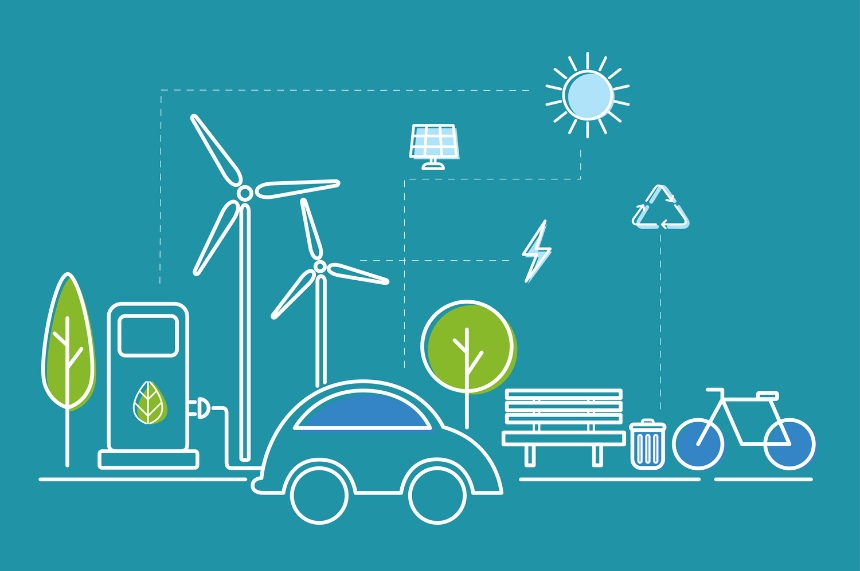History of Electric Vehicles and Procurement's role in Electrification
Business | February 12, 2023 | By
Internal combustion engine (ICE) vehicles are still the dominant players in the automotive market. But with climate change, sustainability issues, etc. cropping up, Electric Vehicles (EVs) have been challenging the status quo. In fact, the last few years have seen a steep rise in global EV sales. In 2021, global sales of EVs touched a whopping 6.6 million units, which is nearly 10% of the total vehicle sales and double the 2020 EV sales volume. Whereas in 2012, only 120,000 units of EVs were sold worldwide. In 2022, EV sales increased even more, hitting the 10 million mark. And analysts predict the 2023 EV sales to touch 14.3 million units with BEVs taking a major share – approximately 11 million units. But, why are EVs suddenly in the mix? Weren’t they in the automotive market before?
Well, EVs are not new to the automotive scene. They have been here since the 1800s. And here’s the journey of EVs.
History of Electric Vehicles
One cannot attribute the invention of EVs to one country or one particular person. Instead, a series of breakthroughs, from batteries to the electric motor, put the first electric car on the road in the late 1880s.
Then, around the turn of the 20th century, as the automobile grew in popularity, there was a stiff battle between the three power options – Gasoline(22%), steam(40%), and electricity(38%).
-
- Steam vehicles, though having a good majority in the US, had their own setback that led to their downfall. The vehicles required up to 45 minutes to start; and needed frequent water refills, limiting their range. While steam was reliable for powering trains and factories, they were not practical enough for vehicles.
- Gasoline-powered vehicles too had their own setbacks. They required the driver to change gears frequently; had to be started with a heavy hand crank; and were noisier and emitted smelly pollutants from their exhaust.
- Electric vehicles on the other hand did not pose any of these problems. As a result, they became popular amongst the urban population, since electricity was readily available.
- At the same time, gasoline vehicles were launched in Germany in 1886 by Gottlieb Daimler and Carl Benz; Porsche developed the world’s first hybrid electric vehicle; and Henry Ford and Thomas Edison partnered to build an affordable EV. But, the Model T from Ford tipped the scales toward gasoline vehicles.
The rise of gasoline vehicles
The discovery of oil in Texas, and later in the 1930s in the middle east, drove down oil prices and gasoline became cheap and even more accessible. At the same time, continuous improvements to the combustion engine solidified the ICE vehicle’s dominance. Also, electric vehicles saw little development and therefore lay dormant for the later part of the 20th century.
The return of Electric Vehicles
In the seventies, oil and subsequently, gasoline prices soared due to the 1973 Arab Oil Embargo. This increased the interest to reduce the dependence on gasoline vehicles. As a result, automakers started to utilize their resources to find alternative fuel options, electricity included. Here’s what happened from 1973 to 2003.
-
- General Motors (GM) developed a prototype for an urban EV.
- NASA amplified the interest in alternative fuel sources when their first ever manned vehicle on the moon was electrically powered.
- But, electric vehicles still posed some problems like short range and limiting top speeds.
- Though the interest in electric vehicles waned down, researchers continued their work. And over the next 20 years, new electrified vehicles of the existing gasoline models were launched by automakers. And a significant turning point was the launch of Toyota’s Prius in 1997. It was the world’s first mass-produced hybrid electric vehicle. And the rising fuel prices and growing carbon emission concerns pushed Prius to be the world’s top-selling hybrid electric vehicle.
- Despite all of this, the real turning point was when two entrepreneurs – Martin Eberhard and Marc Tarpenning incorporated Tesla Motors.
Electrifying rEVolution
Riding on the success of their previous Lithium-ion battery venture, the Tesla founders, in 2006 announced the launch of a luxury electric sports car that could travel more than 320 km on a single charge. Here’s what happened from 2003 to 2021:
-
- Following the success of Tesla, many automakers jumped on the electric bandwagon. And Nissan in 2010, launched LEAF which would go on to become the world’s top-selling EV.
- New battery technologies helped improved the range and reduced costs. The price of Lithium-ion batteries reduced by 97% since 1991. This reduction in battery costs reduced the price of electric vehicles and therefore made them affordable for consumers.
- Following the successes of Tesla and Nissan Leaf, and the reduction in battery costs, many automakers even vowed to stop ICE vehicle production altogether.
- Slowly the number of EVs on the road exploded. From a negligible amount in 2010 to as many as 10 million EVs on roads in 2020.
- Currently, Norway has the highest EV penetration, with 80% of sales in 2022 being EVs.
- And Norway is not alone in this journey, according to Mckinsey & Company, we have reached the tipping point in EV sales. A tipping point is a point beyond which significant and unstoppable changes and effects take place. And this according to Mckinsey & Company means that by 2035, almost all the large automotive markets will go electric.
And with governments, automotive organizations, and individuals looking toward a sustainable future, the growth in EV adoption will only continue to grow and does not seem to slow down anytime soon.
Procurement’s role in electrification
The next 2 decades will be crucial and transformative in the EV sector. And it is not just the adoption of EVs that matter, but its manufacturing and supply chain also play a crucial role in achieving a sustainable future.
But, the path is not easy. The onus lies on policymakers, automotive companies, OEMs, etc., to ensure that we are moving toward a truly sustainable environment and not displacing carbon emissions from ICE vehicles elsewhere. We need sustainable electric power sources, and complete sustainability in the EV manufacturing and supply chain.
In this journey of achieving a completely sustainable EV supply chain, sourcing and procurement will play a vital role. Buyers have to select suppliers who are committed to sustainability and work with existing suppliers to ensure they also join the sustainable bandwagon. Then the buyers have to monitor and evaluate supplier performance, course correct any deviations and at the same time meet the tight targets set by governments. This means that the companies (EV automakers and OEMs) have to follow strict program timelines and launch their products as fast as possible in the market. But, it is not possible if procurement is handled the way it was done decades ago.
Zumen Source-to-Pay is built to address exactly these requirements. Zumen caters to the complete Direct Material source-to-Pay cycle and also complements the legacy ERP and PLM systems with single-click integration. So that both the procurement and design data are there for the buyers when it is needed. To learn more about how Zumen can be a part of your electrification journey, reach out to us at [email protected], or schedule a free demo.
















